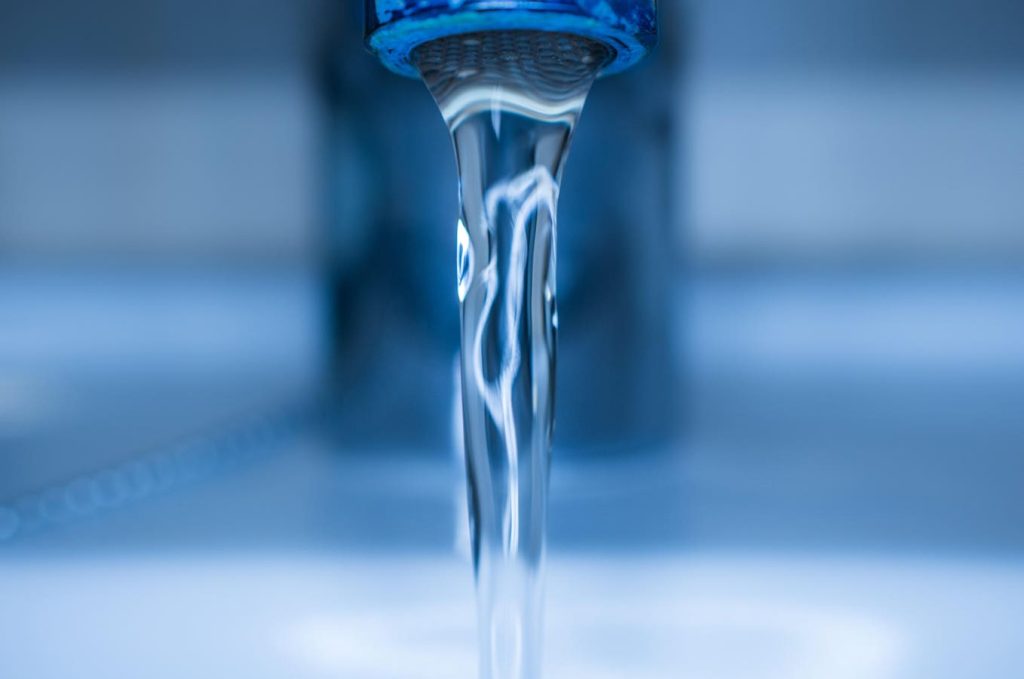Paul Scialla, founder and CEO of Delos. Paul is an expert on indoor environmental quality and healthy buildings.
Recently released research by the U.S. Geological Survey (USGS) revealing that at least 45% of the tap water in the U.S. is contaminated by “forever chemicals” generated headlines across the country. Unfortunately, that is just one aspect of the troubling drinking water story.
Water quality experts have been warning for years that our ability to provide clean drinking water to homes, schools and businesses is under stress from a growing list of challenges. A 2021 assessment by the American Society of Civil Engineers gave the nation’s “aging and underfunded” water infrastructure a C- grade. This aging infrastructure raises concerns as deteriorating water pipes can leach unsafe levels of lead or become a breeding ground for bacteria. Extreme weather can overwhelm water treatment plants.
A Closer Look At The Data
Forever chemicals—the common name for per- and polyfluoroalkyl substances, or PFAS—have joined the list of potential waterborne health threats because they do not break down under typical environmental conditions and can accumulate in the body over time. Recent tap water tests conducted by the USGS on water from more than 700 public water systems and private wells found widespread evidence of PFAS contamination.
Scientists and water quality experts are not alone in their concerns about tap water safety. Pollution of drinking water has ranked as a top concern among Americans for two decades according to Gallup’s annual poll on environmental issues. The 2023 poll found that 55% of Americans worry about unhealthy drinking water “a great deal.”
Distrust of tap water, which increased after contaminated tap water triggered rashes, hair loss and other symptoms associated with elevated contaminant levels including lead and trihalomethanes in Flint, Michigan, in 2014, has undoubtedly contributed to the increasing reliance on bottled water. Americans drank nearly 16 billion gallons of bottled water in 2022, up from about 12.7 billion gallons in 2017. But bottled water is not a fail-safe solution. In addition to the financial and environmental costs of plastic containers, there is no guarantee that bottled water is safe.
Municipal water systems are required to comply with clearly defined safety and quality standards set by the Environmental Protection Agency (EPA). The EPA anticipates finalizing new regulations by the end of 2023 that would limit six PFAS chemical compounds in drinking water.
How Companies Can Help
Residential leaders and developers can take action now to improve drinking water quality with changes that will protect health, improve taste and mitigate issues related to hard water, such as mineral deposits.
1. Filtration
Carbon filtration and reverse osmosis systems can reduce most organic and inorganic contaminants without adding chlorine, which can impact the taste of the water and produce harmful byproducts.
Additionally, look for ultrafiltration systems that rely on semipermeable membranes as they can be particularly effective in removing microbes, bacteria and viruses. Ion exchange water softening technology and scale reduction media—such as template-assisted crystallization (TAC)—can soften hard water and reduce scale buildup in water pipes.
When it comes to PFAS removal, the three most common treatment processes include granular activated carbon, ion exchange resins and high-pressure membrane systems. Builders can consider a variety of systems including whole home filtration as well as point of use, such as under a kitchen sink, to address PFAS and other contaminants of concern.
Depending on the requirements of the home, the residents and the plumbing design, these water solutions can treat 100% of the water in the home (e.g., hot and cold water for all fixtures).
Note that PFAS are more difficult to remove from water compared to other contaminants because of their persistence and chemical stability. Carbon-fluorine bonds are extremely strong; these compounds do not break down in the environment—meaning they will continue to be an issue until removed from the water.
Because there are thousands of individual PFAS chemicals, a one-size-fits-all approach may not be possible. The demand for PFAS-filtering technology varies across different regions. Typically, these regions are characterized by either a higher concentration of forever chemicals in the drinking water or communities that exhibit greater concerns regarding human health.
It is also important to note that not all filters are created equal, and many solutions in the market do not address PFAS or other key contaminants. Therefore, conducting thorough research is essential for residential business leaders to ensure the chosen product delivers the desired results.
2. Monitoring
In addition to taking necessary precautions to ensure cleaner water, residential developers can take an active approach to monitoring water quality in the areas where they operate. This will allow them to move quickly and mitigate issues if and when they arise.
Builders and developers may consult local health departments or your state water board for specific information about contamination in the area. They may also consider checking with the local water utility companies to see if they conduct regular testing for PFAS and other contaminants.
Like air, water is essential for life. We should not take it for granted. Developers, landlords and homeowners should not wait for new government regulations or large-scale infrastructure investments to improve the water that flows into homes, schools and businesses.
Improving poor water quality does not just improve health, it improves quality of life.
Forbes Business Council is the foremost growth and networking organization for business owners and leaders. Do I qualify?
Read the full article here






